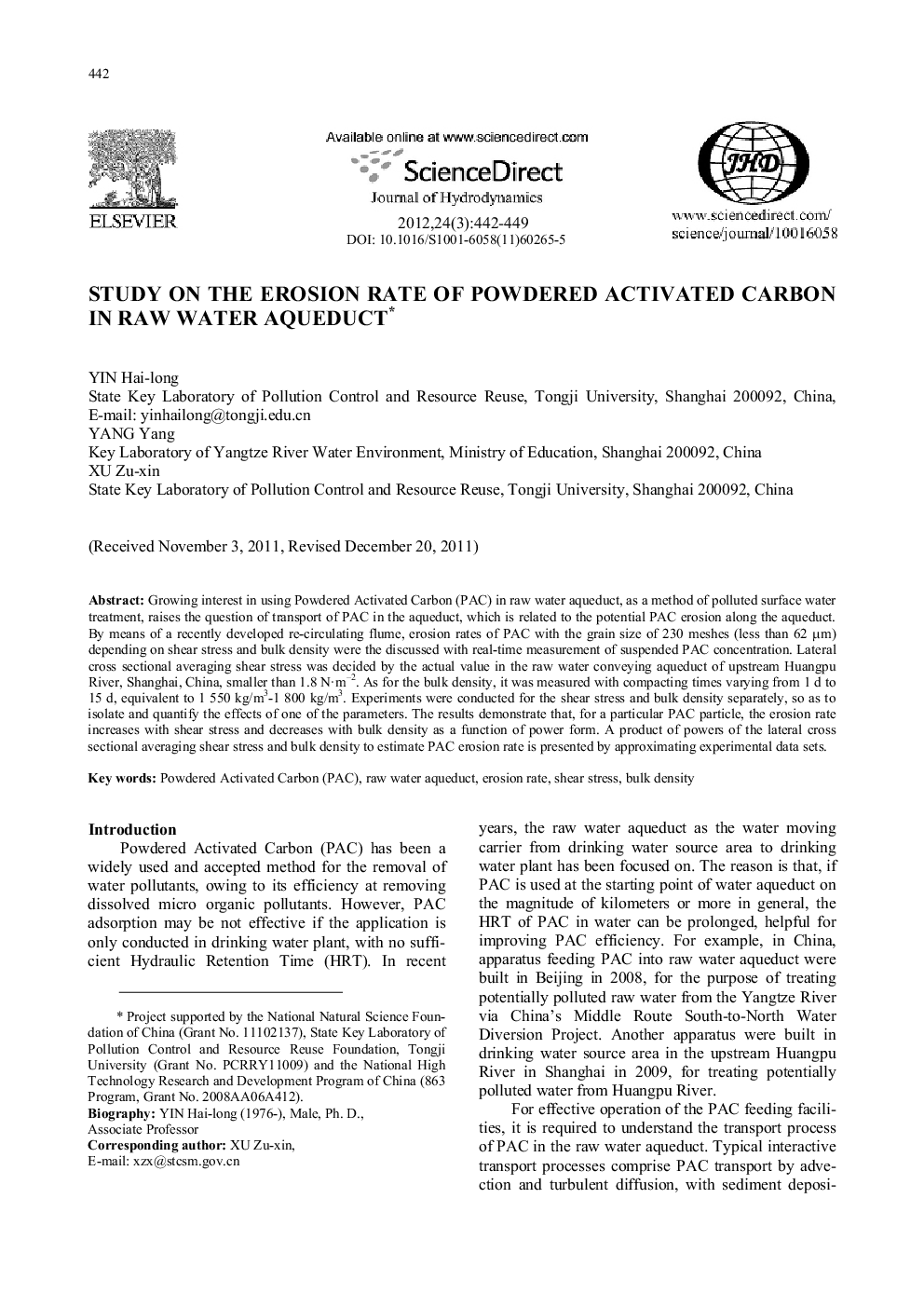| Article ID | Journal | Published Year | Pages | File Type |
|---|---|---|---|---|
| 1722503 | Journal of Hydrodynamics, Ser. B | 2012 | 8 Pages |
Growing interest in using Powdered Activated Carbon (PAC) in raw water aqueduct, as a method of polluted surface water treatment, raises the question of transport of PAC in the aqueduct, which is related to the potential PAC erosion along the aqueduct. By means of a recently developed re-circulating flume, erosion rates of PAC with the grain size of 230 meshes (less than 62 μm) depending on shear stress and bulk density were the discussed with real-time measurement of suspended PAC concentration. Lateral cross sectional averaging shear stress was decided by the actual value in the raw water conveying aqueduct of upstream Huangpu River, Shanghai, China, smaller than 1.8 N·m−2. As for the bulk density, it was measured with compacting times varying from 1 d to 15 d, equivalent to 1 550 kg/m3–1 800 kg/m3. Experiments were conducted for the shear stress and bulk density separately, so as to isolate and quantify the effects of one of the parameters. The results demonstrate that, for a particular PAC particle, the erosion rate increases with shear stress and decreases with bulk density as a function of power form. A product of powers of the lateral cross sectional averaging shear stress and bulk density to estimate PAC erosion rate is presented by approximating experimental data sets.
